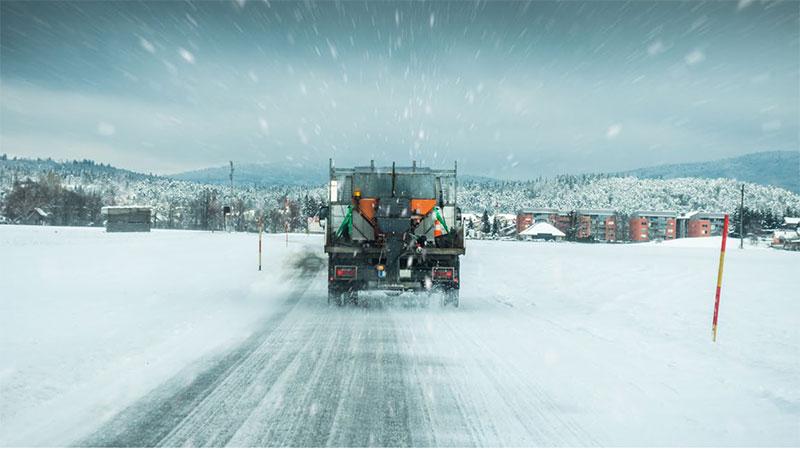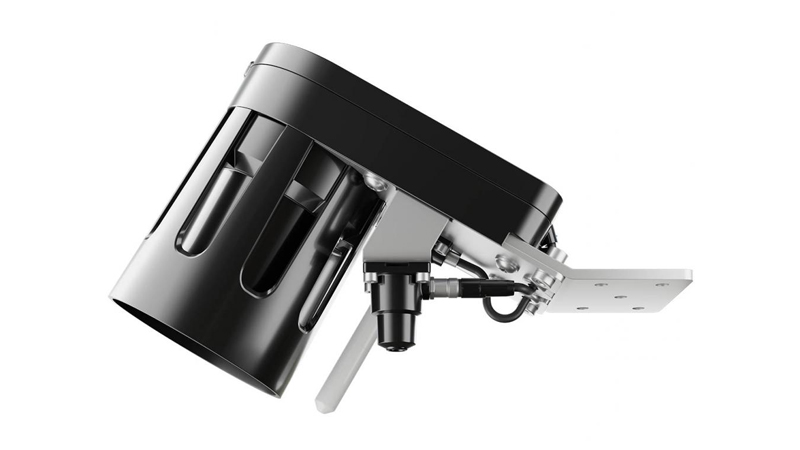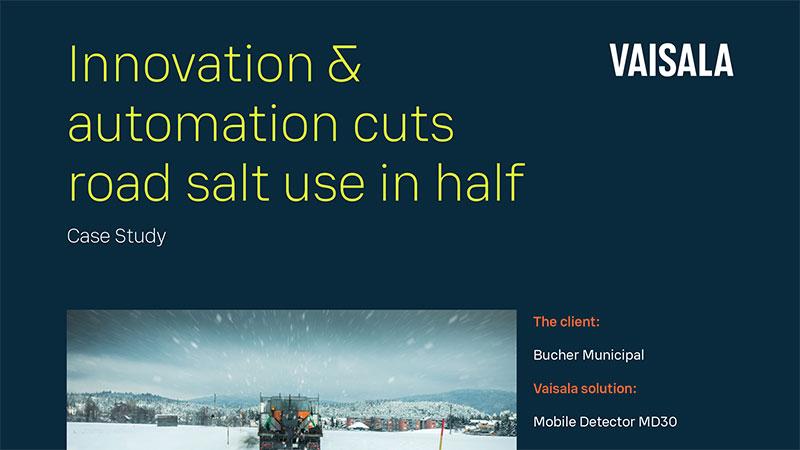Innovation & automation cuts road salt use in half
The client: Bucher Municipal
Vaisala solution: Mobile Detector MD30
Operating in 20 locations across 5 continents, Bucher Municipal provides high-quality road clearing and cleaning equipment including winter maintenance vehicles. Bucher is committed to modern innovation and enabling environmental sustainability.
THE CHALLENGE: Help reduce salt use through automation
Salt is the material of choice in keeping roads safe and clear every winter, but it comes at a great cost: About 60 million tons of road salt is used around the world each year. The U.S. alone uses 20 million tons at a cost of over $2.3 billion*. Salt also corrodes the environment, road infrastructure and equipment.
Roads are usually treated according to predetermined and fixed spreading rates. The thickness of ice, snow and water layers can vary significantly, even over short distances, and fixed spreading rates result in overspreading on most road segments.
Bucher designed Bucher Assist to meet this challenge by enhancing the management and operation of their material spreaders. Advanced cloud-based capabilities such as remote monitoring and spreading control facilitate automation to reduce salt use and o erator workload while enhancing safety.
The organization understood that accurate, realtime road condition data would be crucial for effective automation, and sought a m bile sensor that would integrate effectively with Bucher Assist.
“Bucher Assist is a game changer for drastically reducing salt use and the related environmental impact. MD30 has unparalleled accuracy and consistency which is essential to our smart spreading solution.”
Mihajlo Maravic
Managing Director, Giletta SpA, Bucher Municipal
THE APPROACH: Integrating road weather data with a cloudbased approach
Bucher selected Vaisala Mobile Detector MD30 for its ability to collect highly accurate, real-time data on water, ice, or snow layer thickness and road temperature, along with grip, road state, air temperature and humidity. MD30 attaches to any vehicle including snowplows, where it stands up to slush and constant vibrations. It monitors road conditions and continuously transmits highly acc rate data — keeping winter road maintenance operations running smoothly and safely.
In a key pilot of MD30 integrated with Bucher Assist, Bucher conducted extensive testing over a full winter season with a winter maintenance organization in northern Italy which has 13 different terrain areas spread over 27 kilometers. They attached MD30 to a bus for daily detection and on a patrol car for night detection.
MD30 registered data every two seconds, which Bucher Assist utilized along with a patented algorithm to calculate the right dosage of solid and liquid treatment for the specific location. Bucher Assist defined the right working parameters for each area and delivered the information to the spreader truck every five minutes.
THE RESULTS: Drastic savings and a bright future
The results of the pilot were astounding: Bucher Assist, integrated with real-time road weather data, cut the use of salt by an average of 53% over one winter.
The savings has significant benefits for operations as well as the environment. By combining realtime road weather data with cloud-based analysis and automation, the platform makes it possible to pre-set snow removal operations and adapt automatically — saving time, costs and resources throughout the winter season.
The solution also allows the operator, without extensive winter road maintenance experience, to concentrate on safe driving, since the spreader automatically operates in line with the optimal procedure on each road section.


